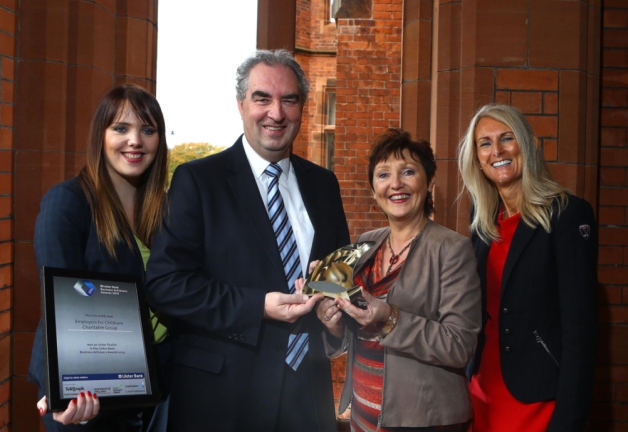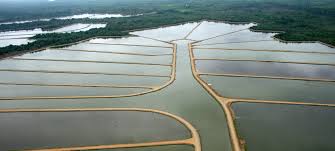Government Grants
Business Grants
Home Owner Programs
Federal Programs
About Us
PNDIODES
Power Nitride Doping Invention Offers Devices Enabling SWITCHES A.
AGENCY OVERVIEW The Advanced Research Projects Agency – Energy (ARPA-E), an organization within the Department of Energy (DOE), is chartered by Congress in the America COMPETES Act of 2007 (P.L.
110-69), as amended by the America COMPETES Reauthorization Act of 2010 (P.L.
111-358) to:
“(A) to enhance the economic and energy security of the United States through the development of energy technologies that result in— (i) reductions of imports of energy from foreign sources; (ii) reductions of energy-related emissions, including greenhouse gases; and (iii) improvement in the energy efficiency of all economic sectors; and (B) to ensure that the United States maintains a technological lead in developing and deploying advanced energy technologies.” ARPA-E issues this Funding Opportunity Announcement (FOA) under the programmatic authorizing statute codified at 42 U.S.C.
§ 1653 8. The FOA and any awards made under this FOA are subject to 2 C.F.R.
Part 200 as amended by 2 C.F.R.
Part 91 0. ARPA-E funds research on and the development of high-potential, high-impact energy technologies that are too early for private-sector investment.
The agency focuses on technologies that can be meaningfully advanced with a modest investment over a defined period of time in order to catalyze the translation from scientific discovery to early-stage technology.
For the latest news and information about ARPA-E, its programs and the research projects currently supported, see:
http://arpa-e.energy.gov/.
ARPA-E funds transformational research.
Existing energy technologies generally progress on established “learning curves” where refinements to a technology and the economies of scale that accrue as manufacturing and distribution develop drive down the cost/performance metric in a gradual fashion.
This continual improvement of a technology is important to its increased commercial deployment and is appropriately the focus of the private sector or the applied technology offices within DOE.
By contrast, ARPA-E supports transformative research that has the potential to create fundamentally new learning curves.
ARPA-E technology projects typically start with cost/performance estimates well above the level of an incumbent technology.
Given the high risk inherent in these projects, many will fail to progress, but some may succeed in generating a new learning curve with a projected cost/performance metric that is significantly lower than that of the incumbent technology.
ARPA-E funds technology with the potential to be disruptive in the marketplace.
The mere creation of a new learning curve does not ensure market penetration.
Rather, the ultimate value of a technology is determined by the marketplace, and impactful technologies ultimately become disruptive – that is, they are widely adopted and displace existing technologies from the marketplace or create entirely new markets.
ARPA-E understands that definitive proof of market disruption takes time, particularly for energy technologies.
Therefore, ARPA-E funds the development of technologies that, if technically successful, have the clear disruptive potential, e.g., by demonstrating capability for manufacturing at competitive cost and deployment at scale.
ARPA-E funds applied research and development.
The Office of Management and Budget defines “applied research” as “systematic study to gain knowledge or understanding necessary to determine the means by which a recognized and specific need may be met” and defines “development” as the “systematic application of knowledge or understanding, directed toward the production of useful materials, devices, and systems or methods, including design, development, and improvement of prototypes and new processes to meet specific requirements.” Applicants interested in receiving financial assistance for basic research should contact the DOE’s Office of Science (http://science.energy.gov/).
Office of Science national scientific user facilities (http://science.energy.gov/user-facilities/) are open to all researchers, including ARPA-E applicants and awardees.
These facilities provide advanced tools of modern science including accelerators, colliders, supercomputers, light sources and neutron sources, as well as facilities for studying the nanoworld, the environment, and the atmosphere.
Projects focused on the improvement of existing technology platforms along defined roadmaps may be appropriate for support through the DOE offices such as:
the Office of Energy Efficiency and Renewable Energy (http://www.eere.energy.gov/), the Office of Fossil Energy (http://fossil.energy.gov/), the Office of Nuclear Energy (http://www.energy.gov/ne/office-nuclear-energy), and the Office of Electricity Delivery and Energy Reliability (http://energy.gov/oe/office-electricity-delivery-and-energy-reliability).
A.
PROGRAM OVERVIEW 1. SUMMARY The PNDIODES (Power Nitride Doping Innovation Offers Devices Enabling SWITCHES) program seeks to fund transformational advances and mechanistic understanding in the process of selective area doping in the III-Nitride wide band gap (WBG) semiconductor material system and the demonstration of arbitrarily placed, reliable, contactable, and generally useable p-n junction regions that enable high-performance and reliable vertical power electronic semiconductor devices.
The microscopic mechanistic understanding and transformational technologies will address the major obstacle in the fabrication of vertical GaN power electronic devices experienced by most of the teams in the ARPA-E SWITCHES (Strategies for Wide Bandgap, Inexpensive Transistors for Controlling High-Efficiency Systems) program.
This challenge has been the lack of a viable GaN selective area doping or selective area epitaxial regrowth process that yields material of sufficiently high quality to enable a defect-free p-n junction on patterned GaN surfaces.
Success in this area will allow further development of a revolutionary and powerful class of vertical GaN power electronic devices suitable for 1200V to 10kV broad range of applications (consumer electronics, power supplies, solar inverters, wind power, automotive, motor drives, ship propulsion, rail, and the grid).
To obtain a copy of the Funding Opportunity Announcement (FOA) please go to the ARPA-E website at https://arpa-e-foa.energy.gov.
ARPA-E will not review or consider concept papers submitted through other means.
For detailed guidance on using ARPA-E eXCHANGE, please refer to the ARPA-E eXCHANGE User Guide (https://arpa-e-foa.energy.gov/Manuals.aspx).
AGENCY OVERVIEW The Advanced Research Projects Agency – Energy (ARPA-E), an organization within the Department of Energy (DOE), is chartered by Congress in the America COMPETES Act of 2007 (P.L.
110-69), as amended by the America COMPETES Reauthorization Act of 2010 (P.L.
111-358) to:
“(A) to enhance the economic and energy security of the United States through the development of energy technologies that result in— (i) reductions of imports of energy from foreign sources; (ii) reductions of energy-related emissions, including greenhouse gases; and (iii) improvement in the energy efficiency of all economic sectors; and (B) to ensure that the United States maintains a technological lead in developing and deploying advanced energy technologies.” ARPA-E issues this Funding Opportunity Announcement (FOA) under the programmatic authorizing statute codified at 42 U.S.C.
§ 1653 8. The FOA and any awards made under this FOA are subject to 2 C.F.R.
Part 200 as amended by 2 C.F.R.
Part 91 0. ARPA-E funds research on and the development of high-potential, high-impact energy technologies that are too early for private-sector investment.
The agency focuses on technologies that can be meaningfully advanced with a modest investment over a defined period of time in order to catalyze the translation from scientific discovery to early-stage technology.
For the latest news and information about ARPA-E, its programs and the research projects currently supported, see:
http://arpa-e.energy.gov/.
ARPA-E funds transformational research.
Existing energy technologies generally progress on established “learning curves” where refinements to a technology and the economies of scale that accrue as manufacturing and distribution develop drive down the cost/performance metric in a gradual fashion.
This continual improvement of a technology is important to its increased commercial deployment and is appropriately the focus of the private sector or the applied technology offices within DOE.
By contrast, ARPA-E supports transformative research that has the potential to create fundamentally new learning curves.
ARPA-E technology projects typically start with cost/performance estimates well above the level of an incumbent technology.
Given the high risk inherent in these projects, many will fail to progress, but some may succeed in generating a new learning curve with a projected cost/performance metric that is significantly lower than that of the incumbent technology.
ARPA-E funds technology with the potential to be disruptive in the marketplace.
The mere creation of a new learning curve does not ensure market penetration.
Rather, the ultimate value of a technology is determined by the marketplace, and impactful technologies ultimately become disruptive – that is, they are widely adopted and displace existing technologies from the marketplace or create entirely new markets.
ARPA-E understands that definitive proof of market disruption takes time, particularly for energy technologies.
Therefore, ARPA-E funds the development of technologies that, if technically successful, have the clear disruptive potential, e.g., by demonstrating capability for manufacturing at competitive cost and deployment at scale.
ARPA-E funds applied research and development.
The Office of Management and Budget defines “applied research” as “systematic study to gain knowledge or understanding necessary to determine the means by which a recognized and specific need may be met” and defines “development” as the “systematic application of knowledge or understanding, directed toward the production of useful materials, devices, and systems or methods, including design, development, and improvement of prototypes and new processes to meet specific requirements.” Applicants interested in receiving financial assistance for basic research should contact the DOE’s Office of Science (http://science.energy.gov/).
Office of Science national scientific user facilities (http://science.energy.gov/user-facilities/) are open to all researchers, including ARPA-E applicants and awardees.
These facilities provide advanced tools of modern science including accelerators, colliders, supercomputers, light sources and neutron sources, as well as facilities for studying the nanoworld, the environment, and the atmosphere.
Projects focused on the improvement of existing technology platforms along defined roadmaps may be appropriate for support through the DOE offices such as:
the Office of Energy Efficiency and Renewable Energy (http://www.eere.energy.gov/), the Office of Fossil Energy (http://fossil.energy.gov/), the Office of Nuclear Energy (http://www.energy.gov/ne/office-nuclear-energy), and the Office of Electricity Delivery and Energy Reliability (http://energy.gov/oe/office-electricity-delivery-and-energy-reliability).
A.
PROGRAM OVERVIEW 1. SUMMARY The PNDIODES (Power Nitride Doping Innovation Offers Devices Enabling SWITCHES) program seeks to fund transformational advances and mechanistic understanding in the process of selective area doping in the III-Nitride wide band gap (WBG) semiconductor material system and the demonstration of arbitrarily placed, reliable, contactable, and generally useable p-n junction regions that enable high-performance and reliable vertical power electronic semiconductor devices.
The microscopic mechanistic understanding and transformational technologies will address the major obstacle in the fabrication of vertical GaN power electronic devices experienced by most of the teams in the ARPA-E SWITCHES (Strategies for Wide Bandgap, Inexpensive Transistors for Controlling High-Efficiency Systems) program.
This challenge has been the lack of a viable GaN selective area doping or selective area epitaxial regrowth process that yields material of sufficiently high quality to enable a defect-free p-n junction on patterned GaN surfaces.
Success in this area will allow further development of a revolutionary and powerful class of vertical GaN power electronic devices suitable for 1200V to 10kV broad range of applications (consumer electronics, power supplies, solar inverters, wind power, automotive, motor drives, ship propulsion, rail, and the grid).
To obtain a copy of the Funding Opportunity Announcement (FOA) please go to the ARPA-E website at https://arpa-e-foa.energy.gov.
ARPA-E will not review or consider concept papers submitted through other means.
For detailed guidance on using ARPA-E eXCHANGE, please refer to the ARPA-E eXCHANGE User Guide (https://arpa-e-foa.energy.gov/Manuals.aspx).
Related Programs
Advanced Research and Projects Agency - Energy Financial Assistance Program
Department of Energy
Agency: Department of Energy
Office: Advanced Research Projects Agency Energy
Estimated Funding: $6,500,000
Office: Advanced Research Projects Agency Energy
Estimated Funding: $6,500,000
Obtain Full Opportunity Text:
ARPA-E eXchange
Additional Information of Eligibility:
Applicants are strongly encouraged to submit their applications at least 48 hours in advance of the submission deadline.
Full Opportunity Web Address:
http://arpa-e-foa-energy.gov
Contact:
ARPA-E CO ARPA-E-CO@hq.doe.gov
Agency Email Description:
ARPA-E CO E-Mail
Agency Email:
ARPA-E-CO@hq.doe.gov
Date Posted:
2016-10-27
Application Due Date:
2017-01-04
Archive Date:
2017-04-01
Social Entrepreneurship
Spotlight
Childcare Charitable Group Named Top Social Enterprise

Employers For Childcare Charitable Group (EFCG), a Lisburn-based charity, has been crowned top Social Enterprise at the Ulster Final of 2014’s Ulster Bank Business Achievers Awards. EFCG seeks to “make it easier for parents with dependent children to get into work and to stay in work.”

